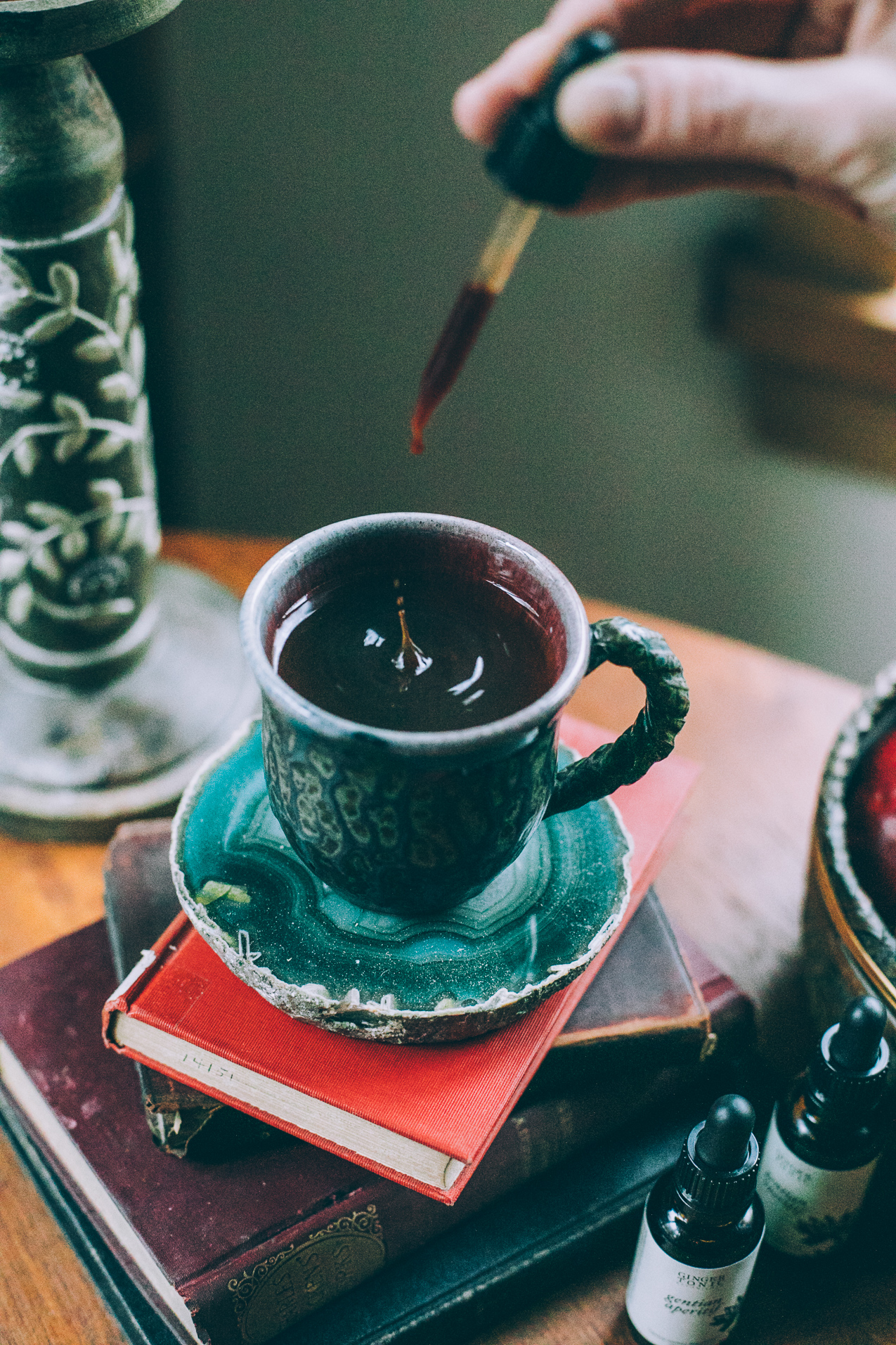
This is a continuation of my first apothecary post – Creating An Herbal Apothecary at Home – where I go into detail about specific herbs and their herbal actions to stock your apothecary. This post will explore all of the extras that can make your home or professional apothecary fully functional and versatile.
At the peak of my apothecary venture after 6 years in business, I stocked over 75 herbs in tea, tincture, and powder form that I shared with 5 additional naturopathic doctors. These were all herbs that I had used for years, and each year I would add a few more to my collection due to client or fellow practitioner demand. It grew and grew, and honestly it was one of the most glorious visual expansions of my business that I could enjoy every day. Every month (sometimes every day), I would learn something new that would enhance the functionality of my apothecary, and I would try it out. Whether it was a new labeling system, new measuring devices, better (wider mouth!) bottles for storing, or a more efficient method of tracking my herbal batches, my apothecary journey felt very fluid and adaptable. As my business model changed, so did my apothecary set up.
Personally, I take a minimalist approach these days.
Currently, I keep a steady rotation of about 15 single herbs (in tea and tincture form). These are herbs that I know as well as my own self, and utilize every single little bit of their medicinal, energetic, and ancestral gifts. As much as I loved the availability of dozens and dozens of herbs, I kept gravitating towards really paring down my collection, and utilizing a handful of herbs that offer a huge array of varying therapeutic benefits. Herbs that I continually researched and found new and old ways of incorporating into client protocols. When I eventually sold my apothecary to my former clinic, I embarked on a new model of stocking my apothecary. One that now minimally suits my personal needs better. Every single herbalist and their business structure may require something different, and that’s the beauty of the time honored herbal apothecary! Adaptable, and fluid, meeting you right were you are.
Below are a few of the staples that I always keep on hand in my apothecary, no matter how big or small my herbal collection becomes.

Tips for Stocking Your Home or Professional Apothecary
Buy only what you need. There’s nothing more disheartening in your treasured apothecary than 12 months after you bought a gazillion herbs, and find you need to discard a hefty bunch of them due to lack of freshness or expired batches. Don’t be too overzealous with your ordering unless you know you’re going to go through them. Or, harvest minimally and as needed so there is minimal waste or un-used herbs.
Source from excellent, sustainable, ethical, and organic origins. If you have a local herb farm or small scale herbal grower, support them if their practices are ethical and good. If you’re purchasing from an herb company, look for organic certification, ethical and sustainable growing practices, and some quality assurances (like offering certificates of analysis for their herbs after testing for impurities or contamination). Some of my preferred herb supplies include Mountain Rose Herbs, Starwest Botanicals, Zack Wood Herb Farm, Galen’s Way, and Gaia Herbs.
Store your herbs for optimal shelf life. Take some time to set up your herb storage space in a place away from direct sunlight, and is temperature controlled. I recommend always using glass storage containers like wide mouth amber glass jars. Read more: 5 Tips for Storing Herbs
Essential measurements. I keep at least one electronic scale with ability to measure in grams, and 4-5 graduated cylinders for tincture measurements. I also keep metal scoops, small metal funnels, and a collection of small, medium, and large mixing bowls.
Labels! For everything you have, label it with common name, botanical name, date, and contact information if you’re giving formulas to clients. You can use any labeling system you like. Simple Avery labels work fine, or an electronic Dymo printer. I also love these gorgeous assorted apothecary labels.
(For the professional apothecary) Herb tracking. This is important to keep track of if you are distributing herbal formulas to a wider range of people, including clients. This can be a binder where you track your herb batches (upon arrival), and list dates of when bottles and bags were opened, and when they were used up. I would also recommend you keep track of any COA’s (Certificates of Analysis) if offered by your herb suppliers for any herbs ordered. This just supports you in your quality control measures.
Cleaning materials. Always keep your compounding space tidy and clean (even if it’s in your own kitchen). I always keep a few bottles green cleaning spray, biodegradable paper towels, and rubbing alcohol (for rubbing the necks of tincture bottles after use so they won’t stick closed).
Not sure which form of herb to keep on hand? Read more: Guide to Herbal Preparations

Visit the Apothecary Shop page to view some of my favorite goods and herbs to stock your own apothecary. Do you have your own apothecary set up? I’d love to see it! Share with the community using #curatingmyapothecary and let’s get inspired by each others’ space!
Photos by Renee Byrd









